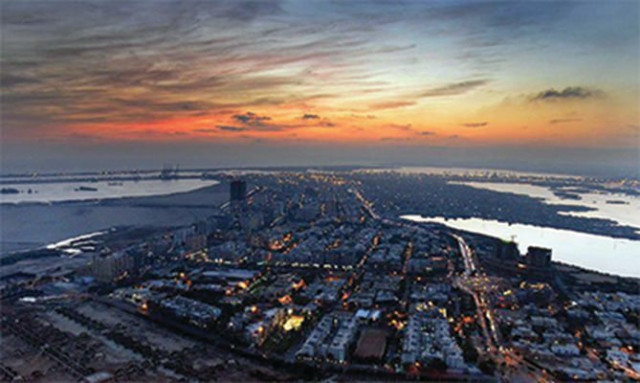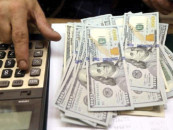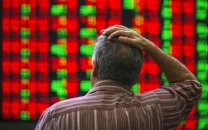Floods of economic uncertainty
Investor confidence dwindles as Pakistan’s global bonds trading at 50% discount

Unfortunate events keep taking their toll on Pakistan’s economy, which is marred by political uncertainty, Russia-Ukraine war, roiled energy markets, US dollar rise and, lately, monumental loss of $30 billion in the aftermath of floods.
Setbacks are toying with investor confidence already shaken by a decade rocked by intermittent balance of payments crisis, currency depreciation, low exports and lack of fiscal space. This time, twice the efforts are needed to lure investors ever again.
Pakistan’s global bonds – the loan the country takes from foreign investors – used to trade at a premium. In layman words, investors are willing to pay $1,100 for a bond with issued value of $1,000 (10% premium).
Notwithstanding the jargons, it showed investors have faith in the borrower’s (Pakistan) ability to repay loans and honour commitments. Those very debt instruments are now being traded at a discount of more than 50%, half the worth since the issuance – a new low for confidence.
Until last year, economic analysts (including your author) were dismissive of the default risks in Pakistan with a “too-big-to-fail” secret sauce. It surely doesn’t help when political leaders cite risks of default – either owing to delay in elections or impact of floods – to the international community. That jeopardises our own case for development and economic stability, thus, the call for timely “absolutely not” to defaults and clarifications, such as not seeking restructuring from bondholders.
Rebuilding the economy doesn’t always warrant external assistance. We have tried to “grow by luck” either in the form of 2014’s oil price crash, Covid-induced economic easing, coalition support funds and/or seeking debt relief under the garb of colossal flood-related economic losses.
Lenders and donors would be wary to mitigate any moral hazard and only extend help to tide the wave over. There is no substitute to fixing the house.
Tellingly, trust – economic or emotional – has unique characteristics. It is hard to gain and easy to lose. Damage done in the last seven months would require one to two years of hard work, consistency and rebuilding of economy.
There are numerous ways to tackle the current high default-risk crisis. Firstly, Pakistan ought to contain inflation to below interest rate levels. It is vital for sceptics to start taking risks by investing in businesses and keeping money away from risk-free assets.
Secondly, current interest rates and controlled government spending are a must to manage current account deficit and dollar outflows.
Thirdly, quarterly primary surplus (revenue minus non-interest paying government expenditure) should be religiously ensured for next three to four years to reduce overall economic debt levels and hush the critics saying “next time, it’s a sure default”.
Fourthly, lenders, such as the IMF, World Bank, ADB and friendly countries, should be constantly assured and need to issue statements validating Pakistan’s path to self-sustainability.
Fifthly, tangible and irreversible efforts to privatise loss-making entities, grow and diversify value-added exports and widen the taxation should be deployed.
Lastly, country’s foreign exchange reserves must increase gradually to four to five months of import ($24-30 billion) and preserved.
Policymakers must stabilise currency, starting today. Job-creating investors and even common man are looking to buy dollars instead of risk-free return, stock market or real estate investments. That is a sheer sign of economic mistrust among the domestic audience.
Imagine the angst and dismay amid international investors betting on Pakistan seeing their US dollar values plummet relentlessly. With REER at 93 and current account deficit moderating to 2.5% of GDP, data is turning favourable.
However, US Fed’s hike is dimming chances of rupee appreciation, especially if the neighbour, Bangladesh, let its currency slip 12% despite carrying four months of forex reserves. Export competitiveness is a non-negotiable clause.
Nonetheless, these are all solvable issues warranting careful investor signalling, monthly credit-risk reducing measures and a stern resolve to begin and continue reforms.
Our geopolitical re-posturing is assuring and hopeful removal from FATF’s enhanced monitoring list could be an infection sign. Also, global oil prices are back to the pre-war scenario ($80 per barrel) when the rupee was trading at 170sh per US dollar and dollar bonds trading at a premium.
Invisible hand is helping again. Let’s save rupee from falling into the category of bolivar, peso, lira and naira. Otherwise, all hell will break loose.
The writer is an independent economic analyst
Published in The Express Tribune, September 26th, 2022.
Like Business on Facebook, follow @TribuneBiz on Twitter to stay informed and join in the conversation.



















COMMENTS
Comments are moderated and generally will be posted if they are on-topic and not abusive.
For more information, please see our Comments FAQ